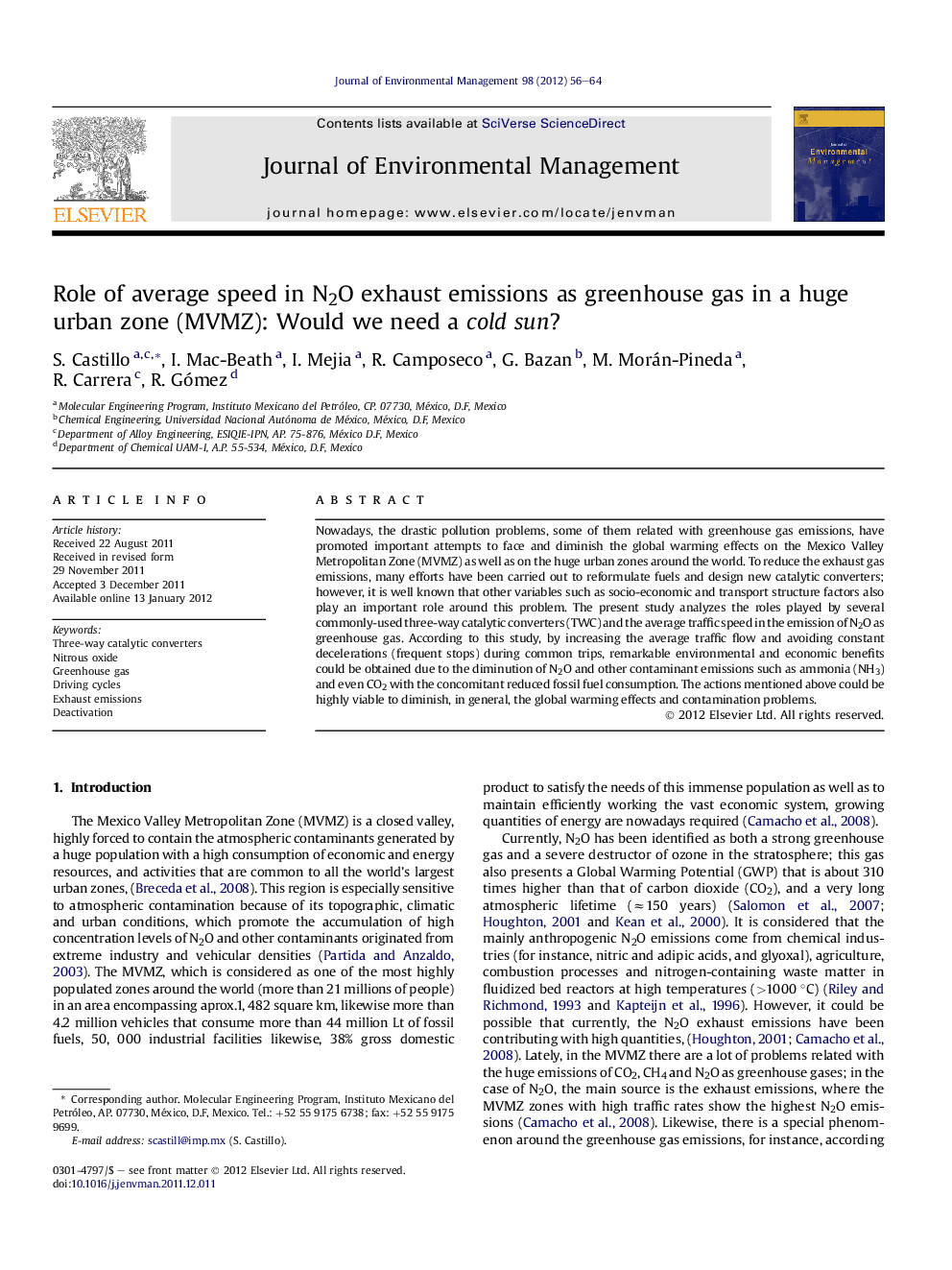| Article ID | Journal | Published Year | Pages | File Type |
|---|---|---|---|---|
| 1056940 | Journal of Environmental Management | 2012 | 9 Pages |
Nowadays, the drastic pollution problems, some of them related with greenhouse gas emissions, have promoted important attempts to face and diminish the global warming effects on the Mexico Valley Metropolitan Zone (MVMZ) as well as on the huge urban zones around the world. To reduce the exhaust gas emissions, many efforts have been carried out to reformulate fuels and design new catalytic converters; however, it is well known that other variables such as socio-economic and transport structure factors also play an important role around this problem. The present study analyzes the roles played by several commonly-used three-way catalytic converters (TWC) and the average traffic speed in the emission of N2O as greenhouse gas. According to this study, by increasing the average traffic flow and avoiding constant decelerations (frequent stops) during common trips, remarkable environmental and economic benefits could be obtained due to the diminution of N2O and other contaminant emissions such as ammonia (NH3) and even CO2 with the concomitant reduced fossil fuel consumption. The actions mentioned above could be highly viable to diminish, in general, the global warming effects and contamination problems.
Graphical abstractFigure optionsDownload full-size imageDownload as PowerPoint slideHighlights► All the commercial converters used in this work catalyze the formation of N2O. ► N2O is produced during cold start, cooling vents and hot conditions of the TWC. ► N2O emissions produced during cooling TWC events are not quantified from cars yet. ► High load metals and aged converters promote the formation of N2O. ► The rational use of vehicles and short trip times can reduce the N2O emissions.
